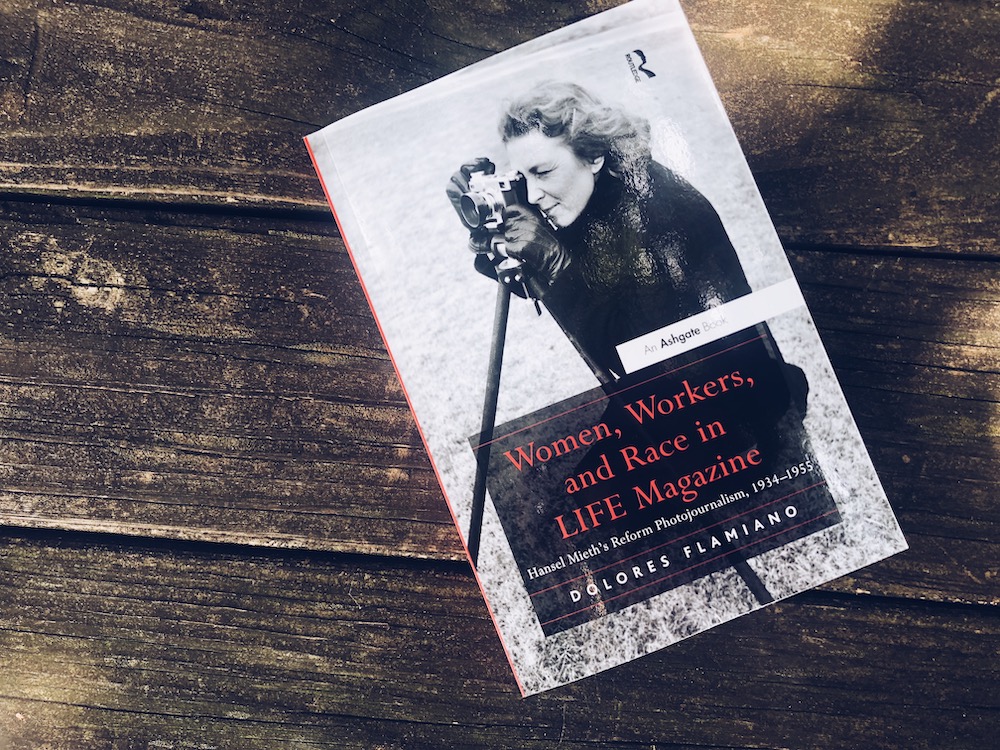Professor Flamiano to Speak on Women Photojournalist Hansel Mieth
Media Arts and Design
By Jessica Kronzer
Professor Dolores Flamiano will be sharing her expertise of female LIFE Photographers at the New York Historical Society on September 13. Flamiano’s book, “Women, Workers, and Race in LIFE Magazine,” details the experience of one female photojournalist pioneer in the exhibition, Hansel Mieth.
The museum exhibit, LIFE: Six Women Photographers, consists of roughly 70 photographs by six women photographers. Flamiano pulled out an photo of the LIFE staff from 1960, a time she considers to be more progressive than the 40’s and 50’s. Only two of the 38 staffers featured are women. Many women in the organization didn’t fit into the categories of “pin-up girls nor happy homemakers,” so they brought a unique perspective to photojournalism.
Hansel Mieth, a German immigrant, was one of the first women to work for LIFE magazine. Mieth first came to Flamiano’s attention when she was writing her dissertation. The journalist was a self-taught photographer who learned by photographing farm workers in the fields of California. Mieth was an immigrant from a poor background and was an avid social activist.
“She seems like somebody who doesn't fit the mold of a LIFE photographer,” Flamiano said. “She wasn't really a big fan of Henry Luce the publisher of LIFE.”
In most of her research, Flamiano finds overlap between history and visual analysis. Her draw towards paradoxes and puzzles led her to write her book about how Mieth balanced her unusual work life and personal life. Flamiano used autobiographical manuscript from the archives at the University of Arizona to find out more about Mieth’s life. She also used journals, interviews, and conversations with those who knew Mieth.
Mieth was at times unhappy with the context the magazine printed her photos. In 1938, editors cut photos of a black nurse in a story on birth control Mieth covered. They chose to include photos that showed only the nurse’s back and the white doctor. Mieth felt the “heart” of the story had been cut out because the nurse played a vital role.
Mieth and other female photographers experienced sexual harassment both by subjects of their photographs and by colleagues. According to Flaminao’s book, Mieth photographed a 1930’s stag party, an all-male event, at the Waldorf. A party-goer purposefully tripped her and she responded by “smashing” her heavy camera “over his head.”
“She loved to tell stories about her adventures in the field and some of the adventures must've been horrible at the time,” Flamiano said. “She turned them into funny stories. A lot of them featured her being kind of feisty and tough and standing up for herself.”
This Women's History Salon event will also include exhibit’s co-curator, Sarah Gordon, photography scholars and Wendy Kozol, a professor at Oberlin College.
“I hope they'll (museum attendees) learn some things that they didn't know about the magazine and about what it was like being a woman and just how much creativity and how much nerve and stamina it took,” Flamiano said. “It was very physically demanding job.”
Flamiano also hopes that the exhibit will inspire other scholars to explore the recently opened TIME’s Inc. Archives, which include LIFE and Sports Illustrated.
Separate research Flamiano did in the archives lead her to write an essay for the catalog of a future exhibit, “Life Magazine and the Power of Photography.” The exhibit opens in February 2020 at Princeton University.
“There are a lot more stories waiting to be told,” Flamiano said. “I'm looking forward to helping to spread the word on some of these stories and I hope other people do the same.”
